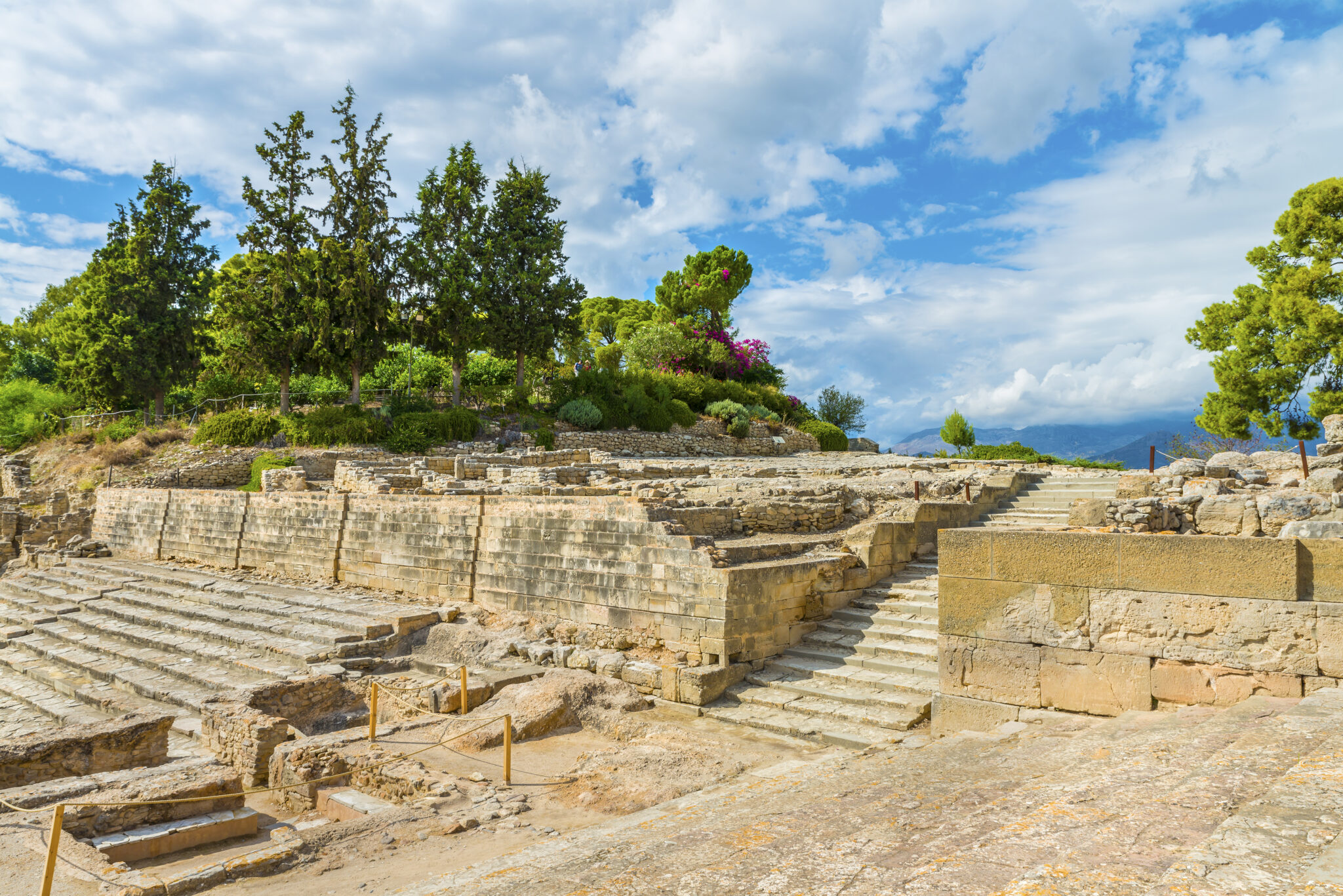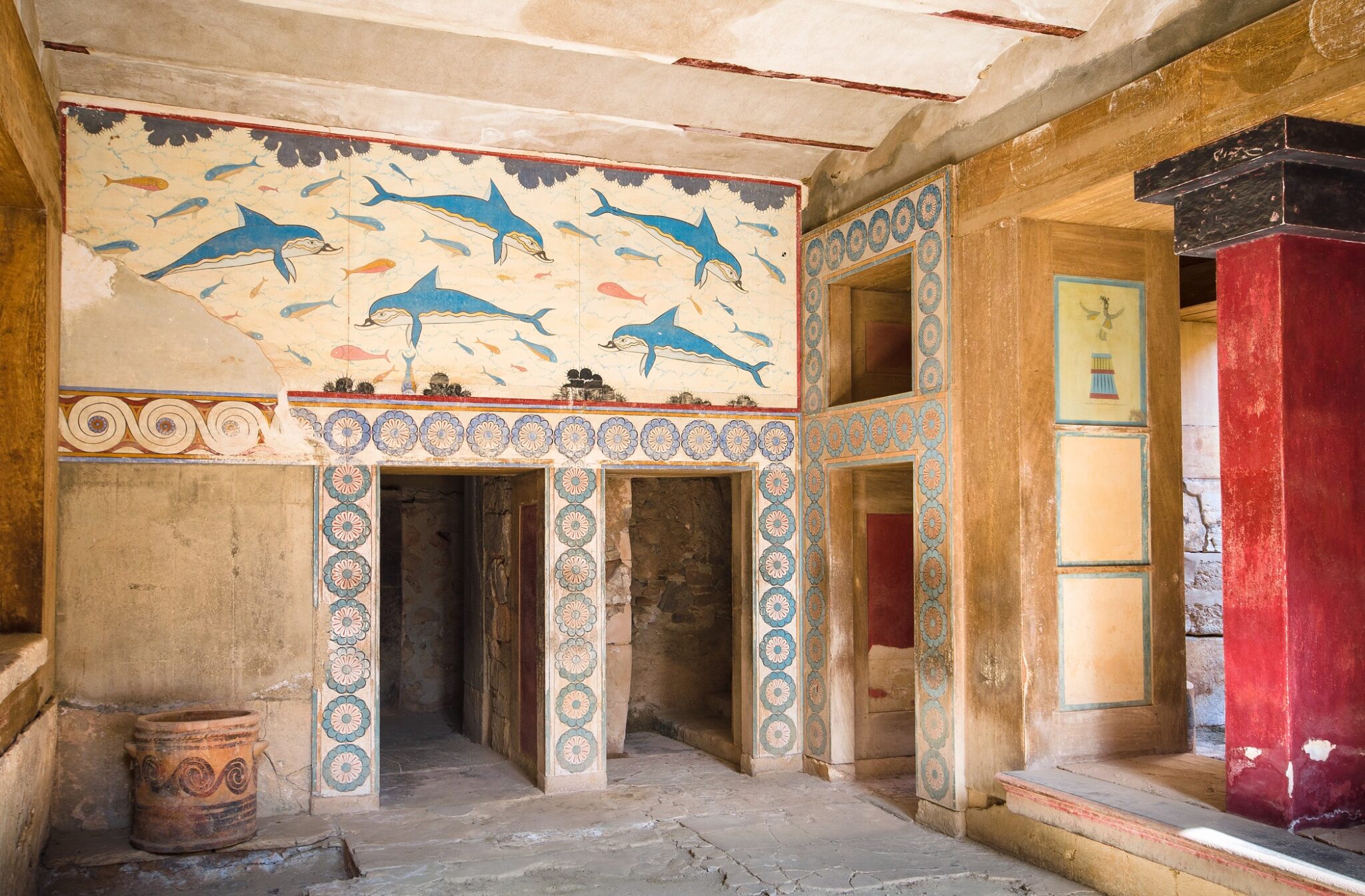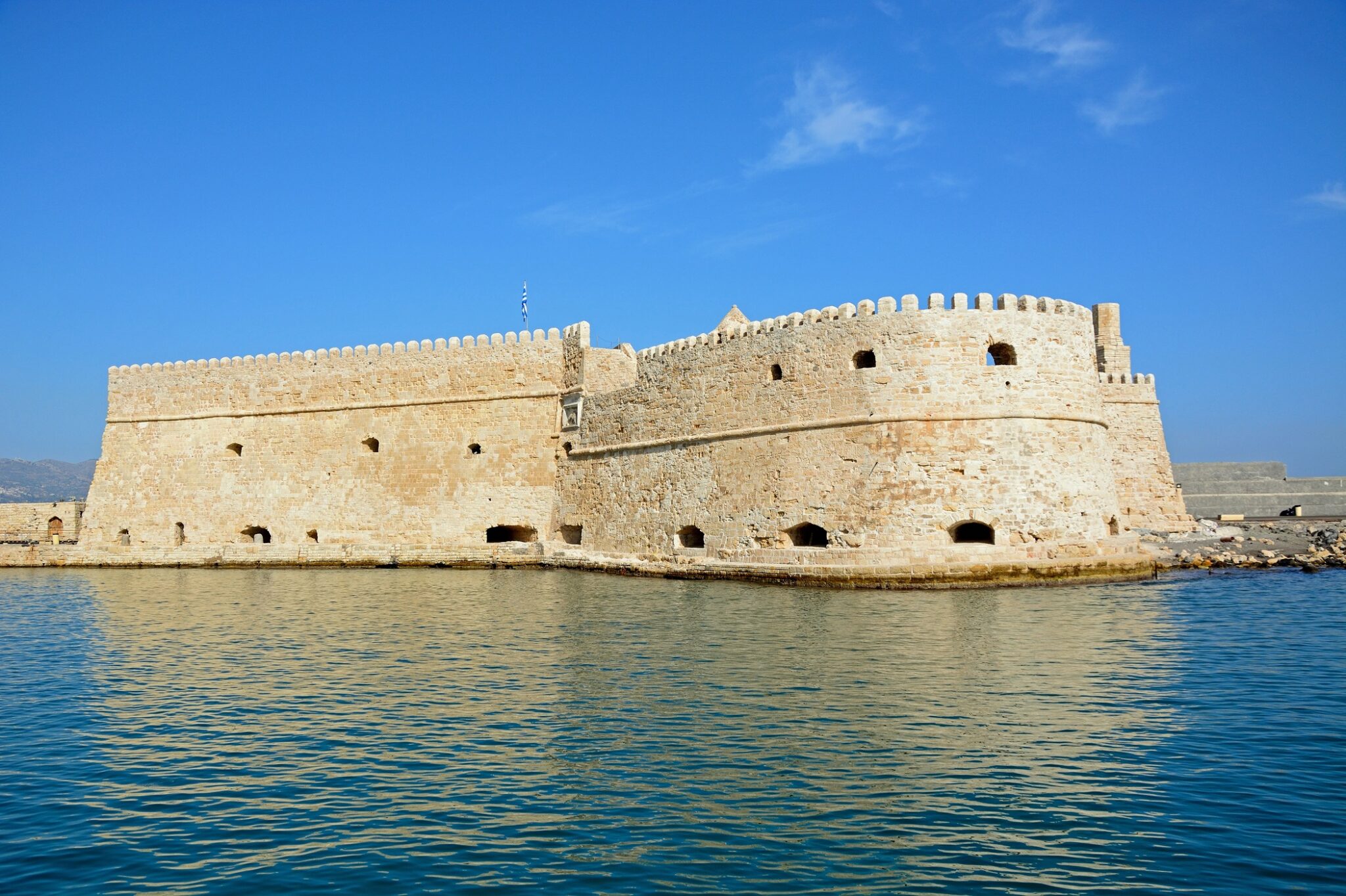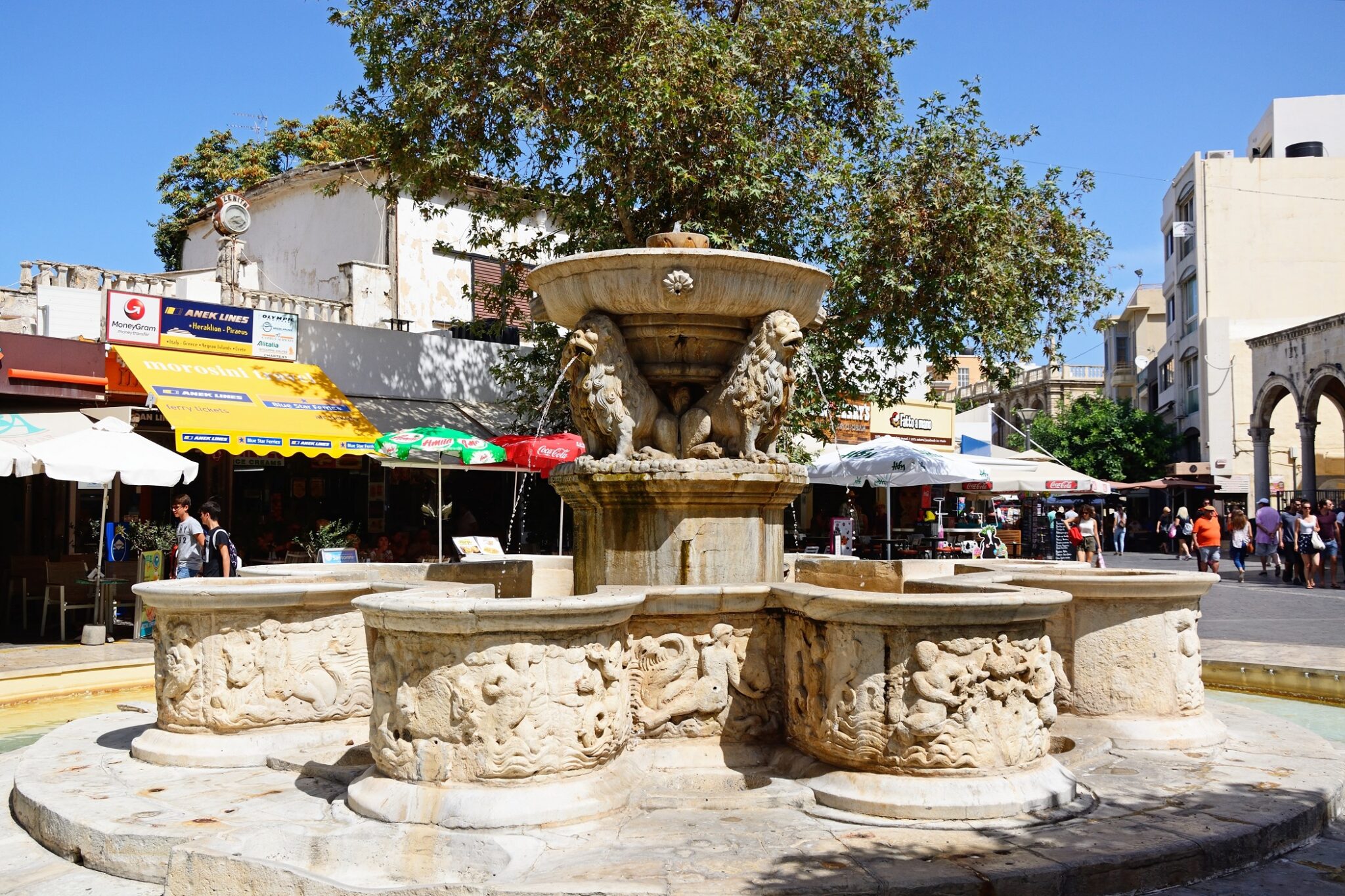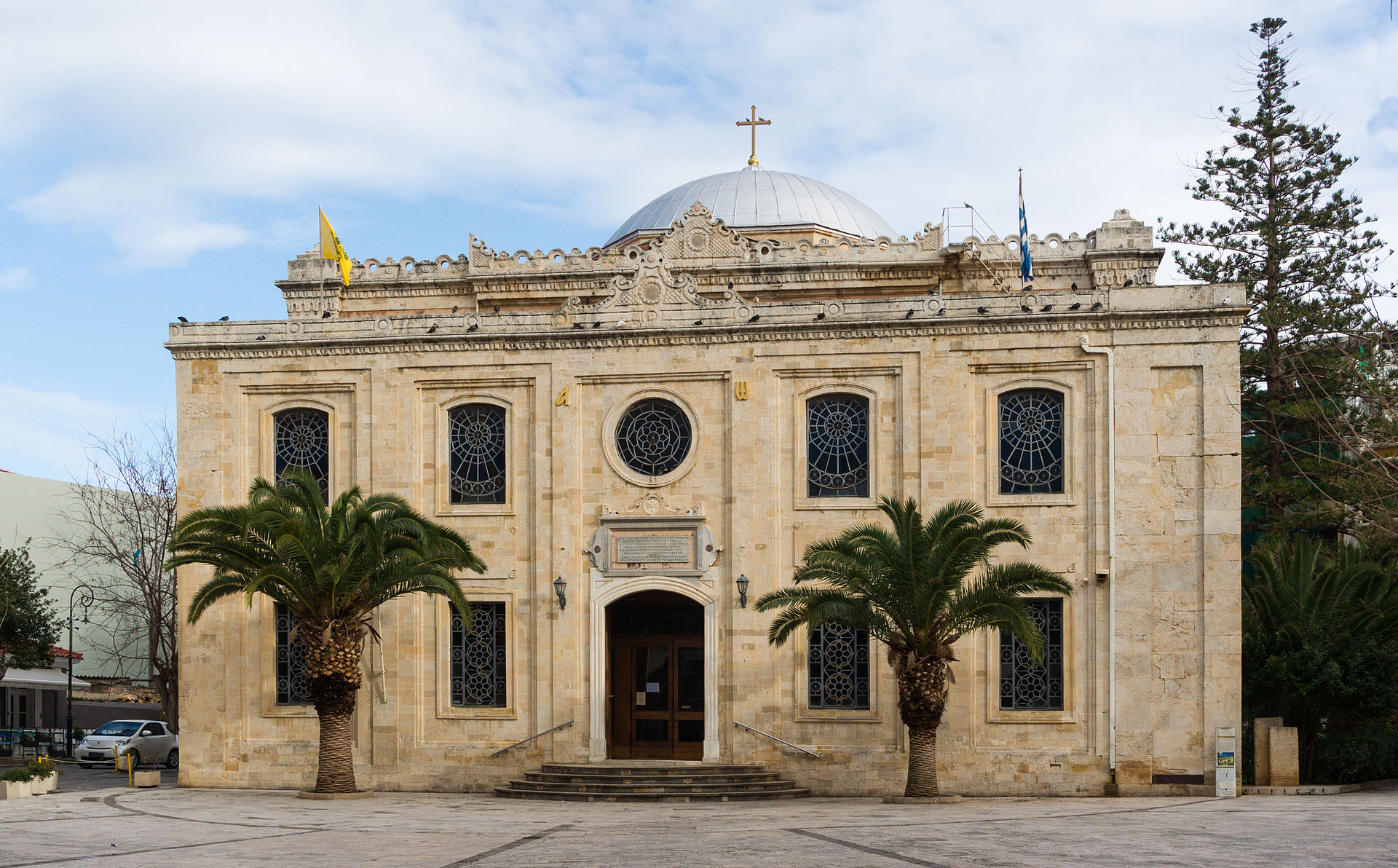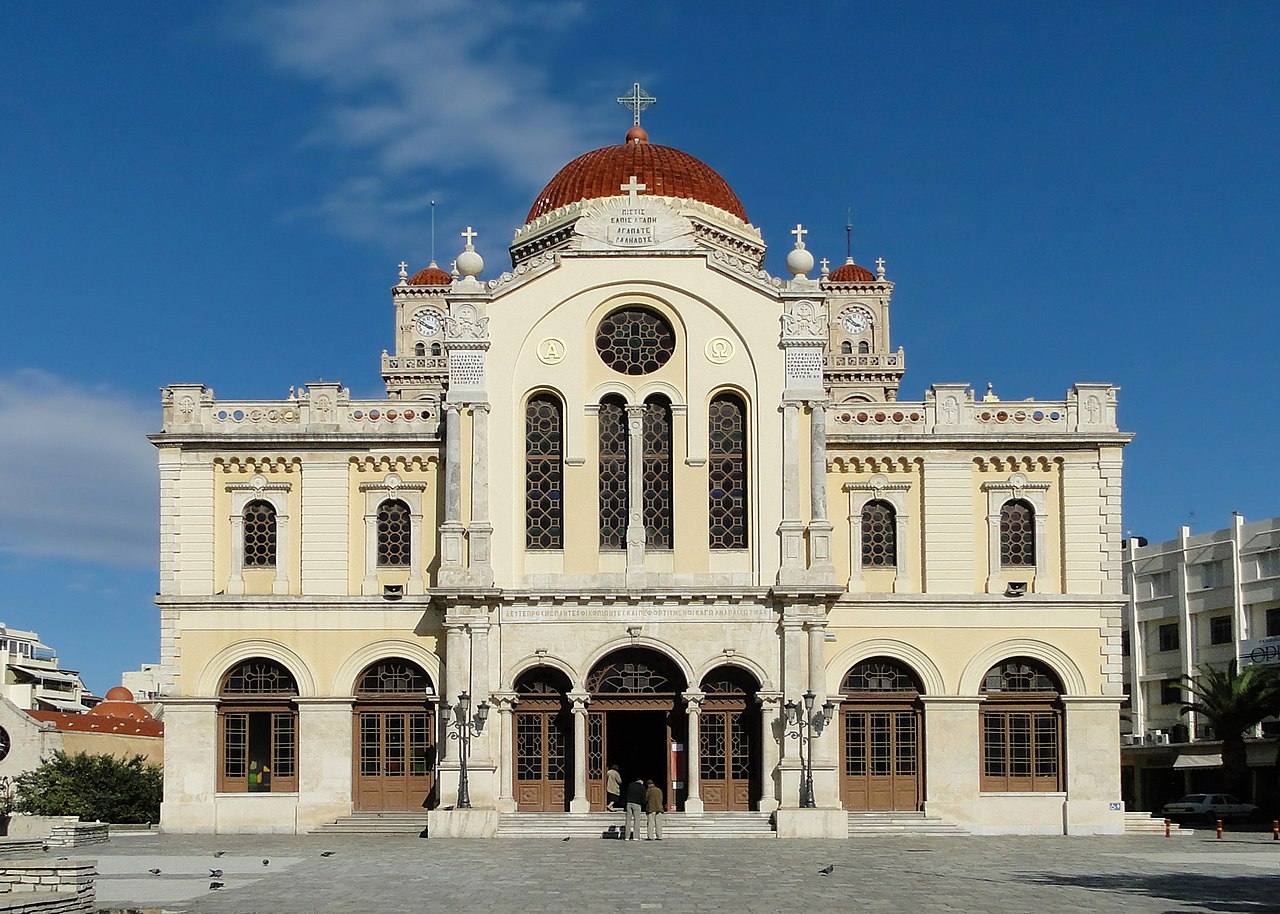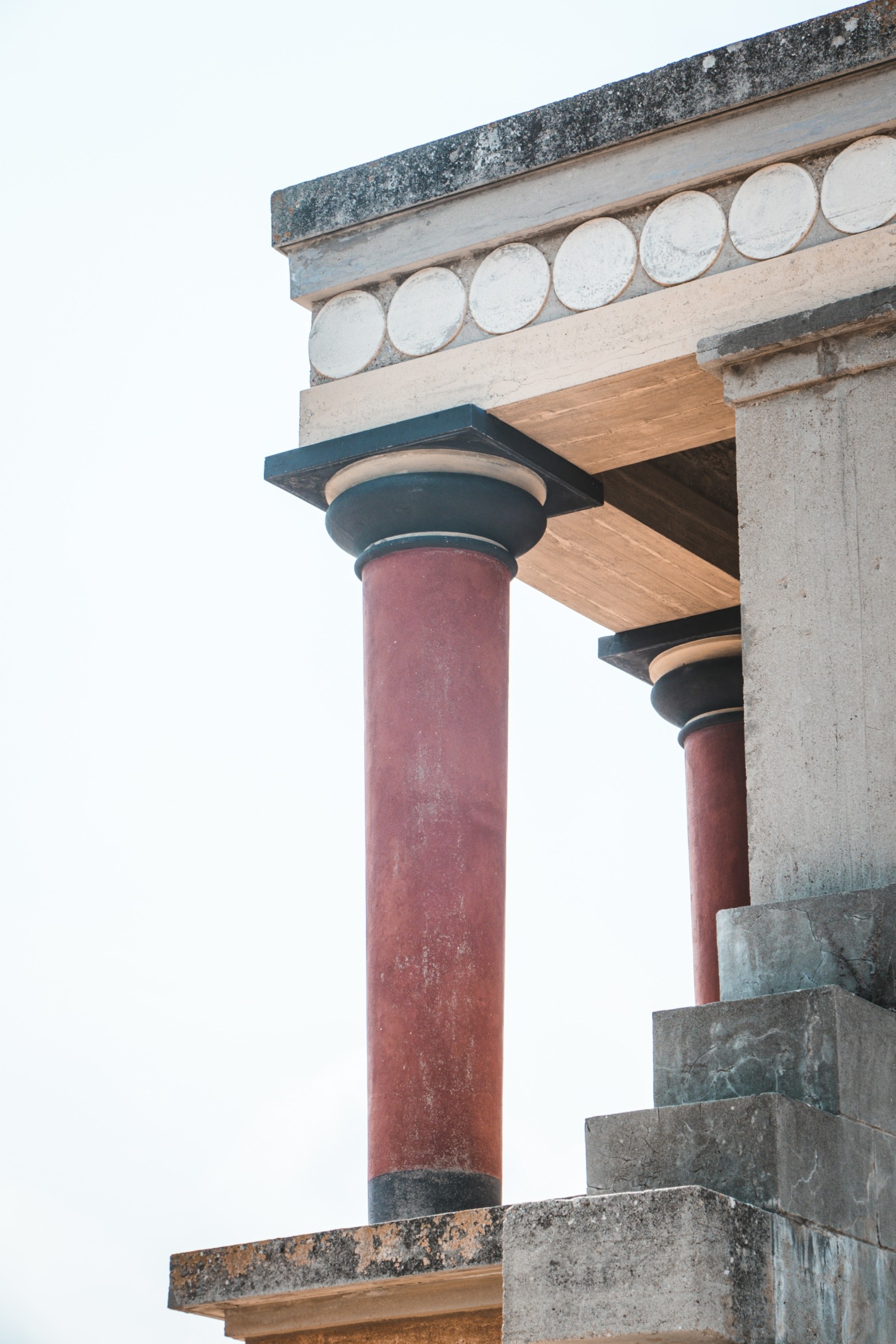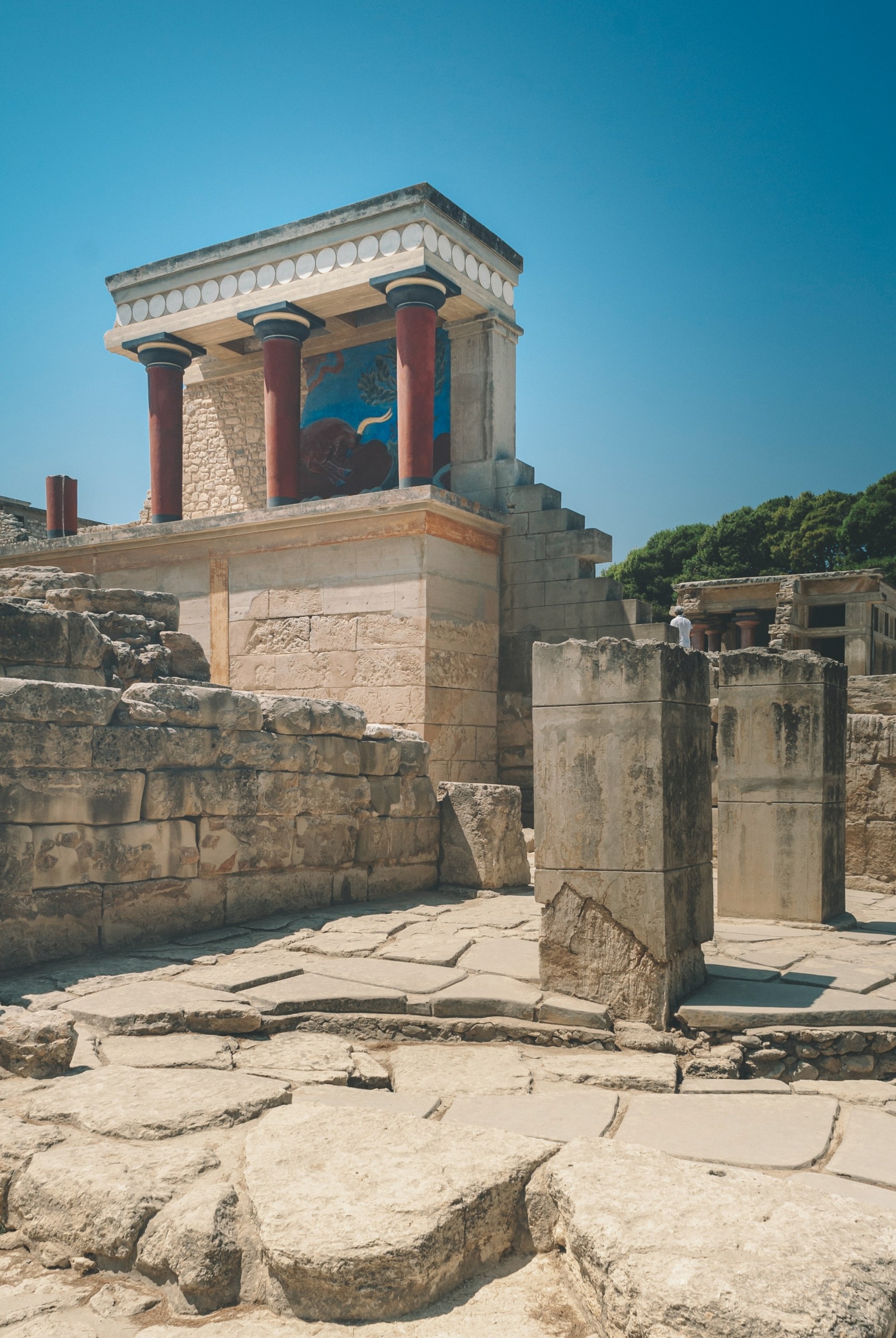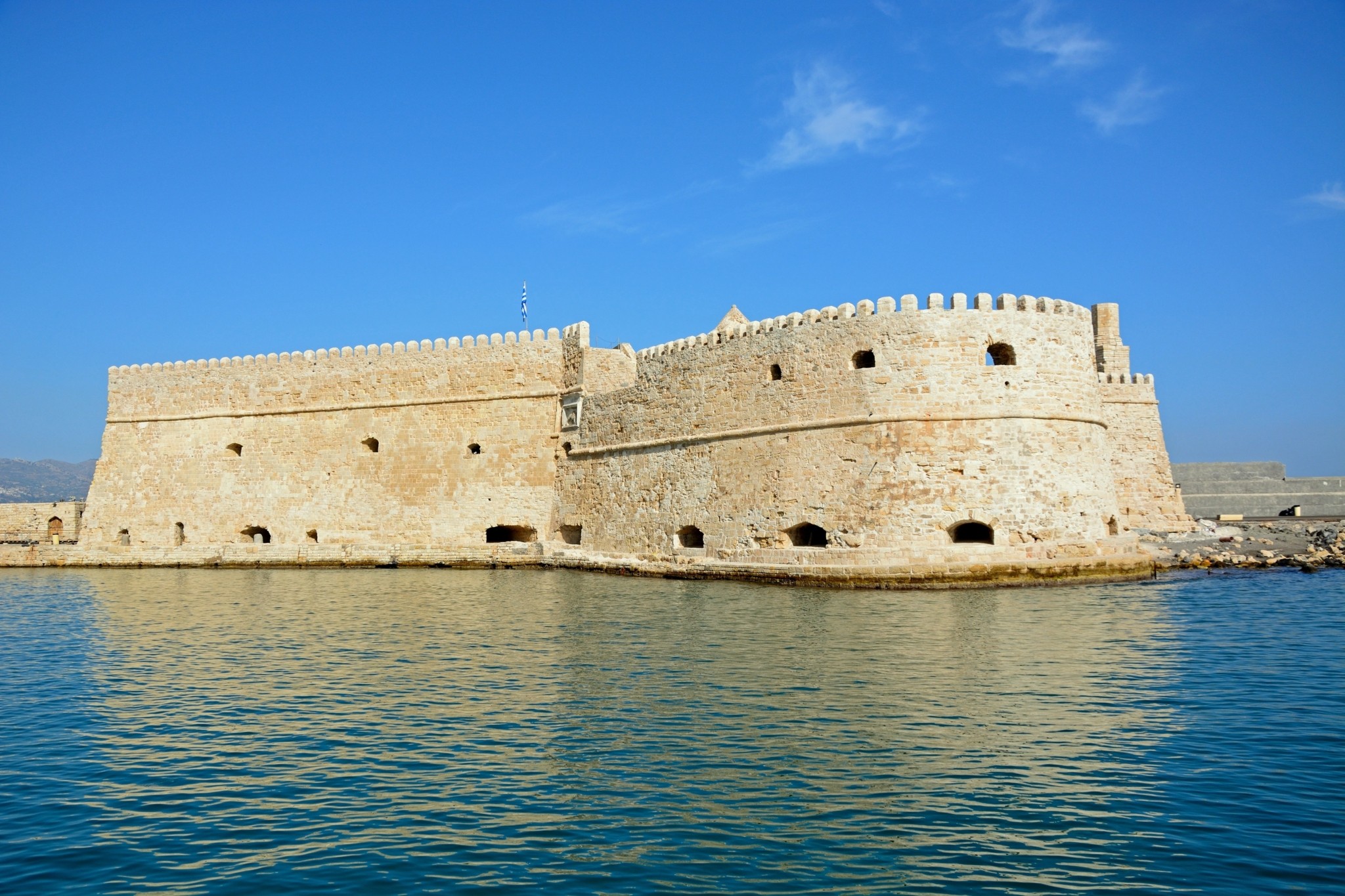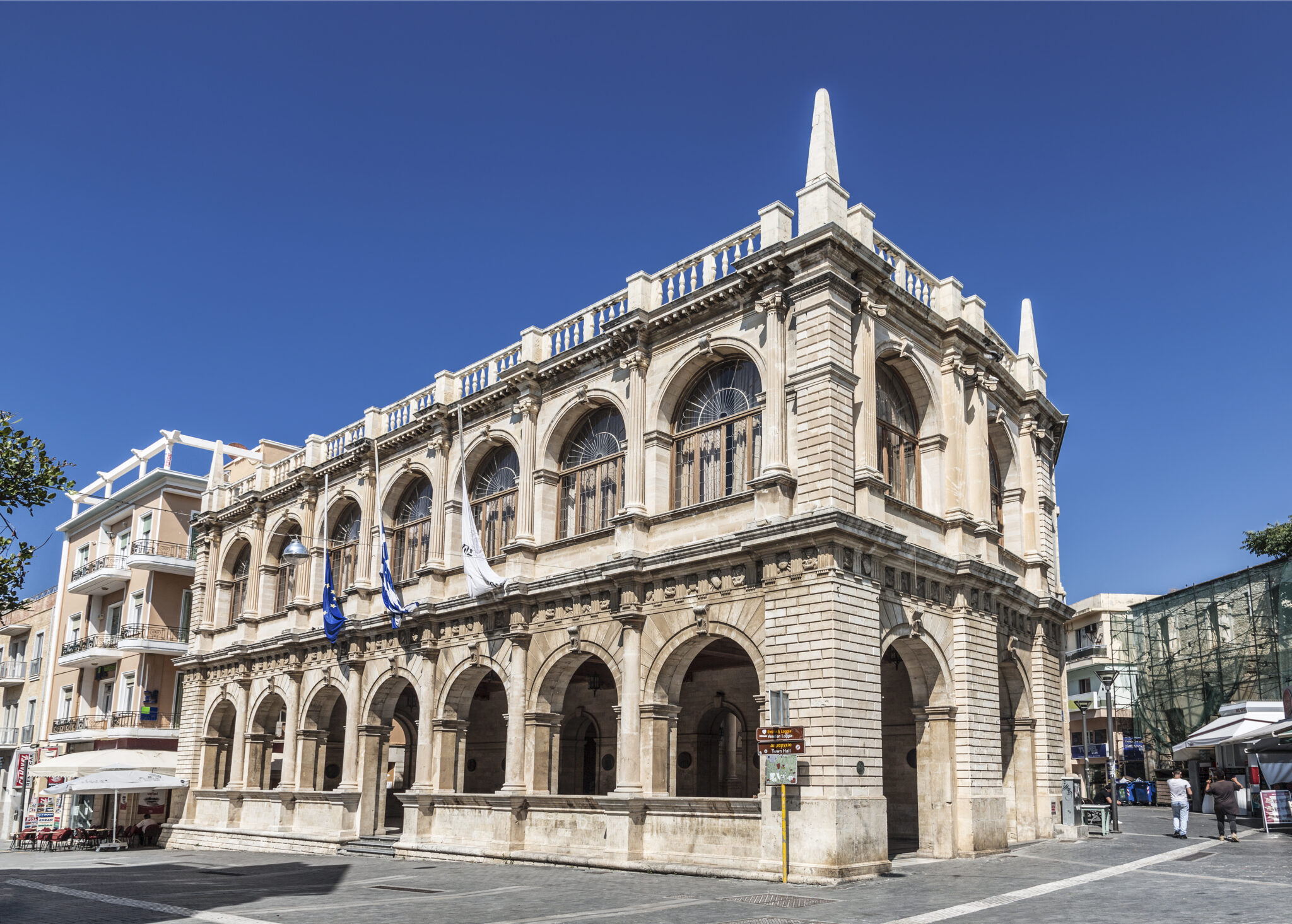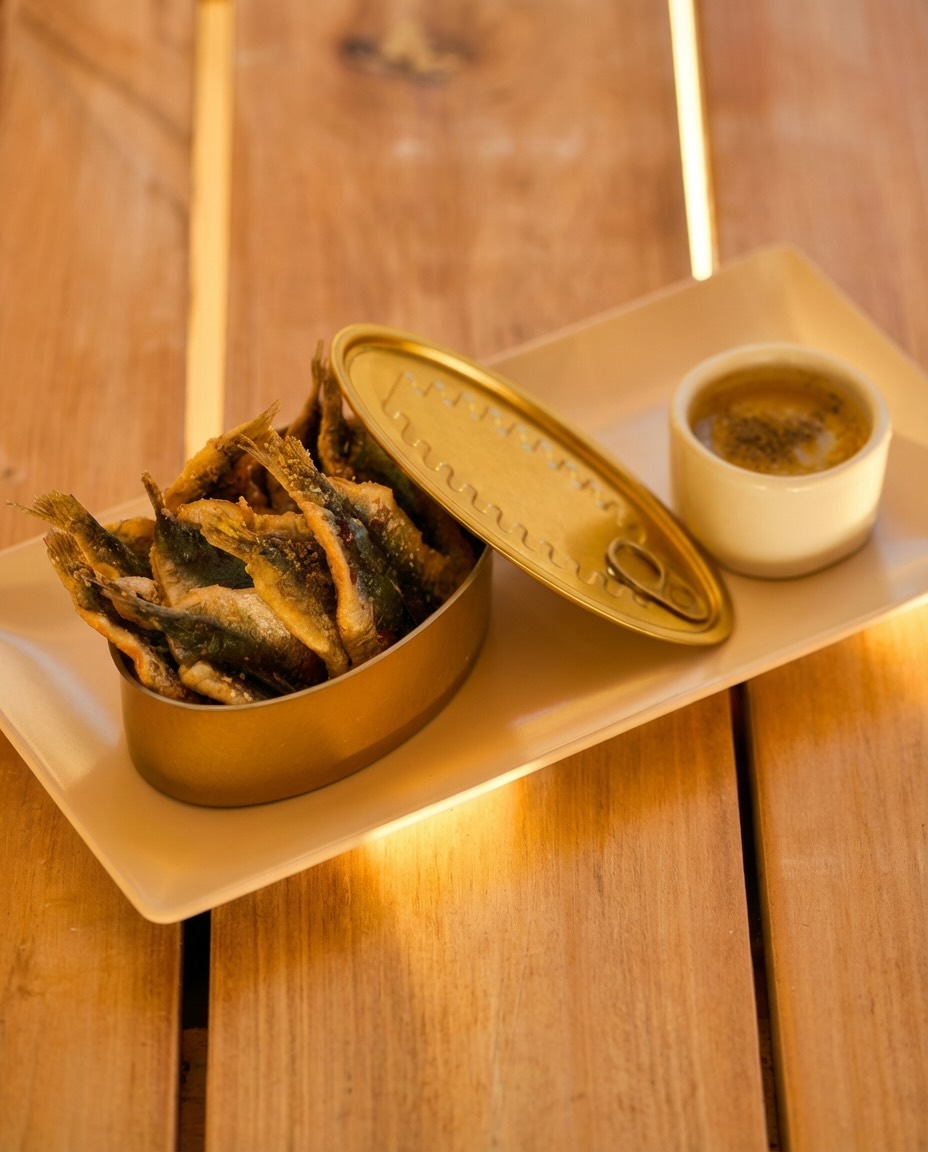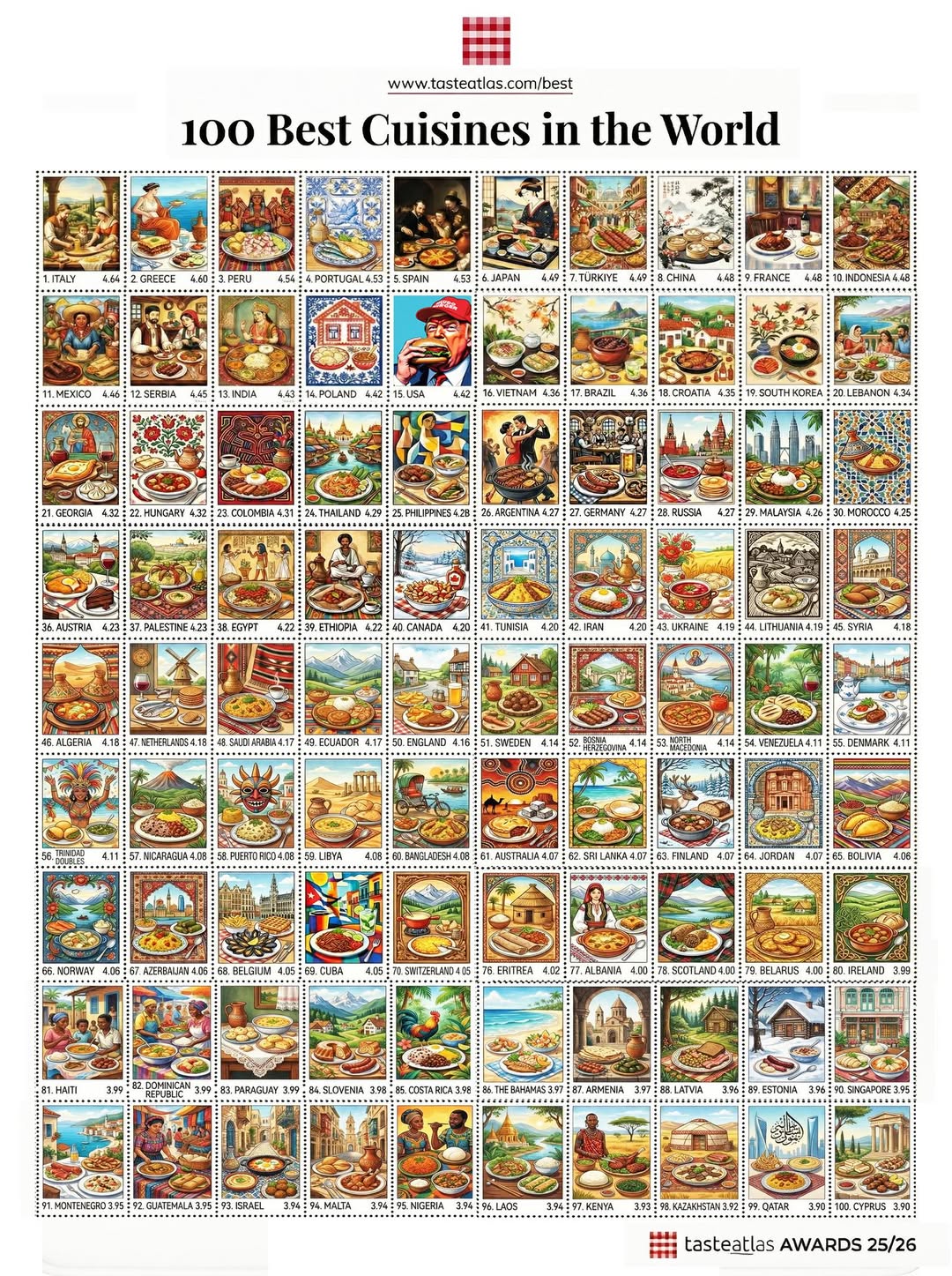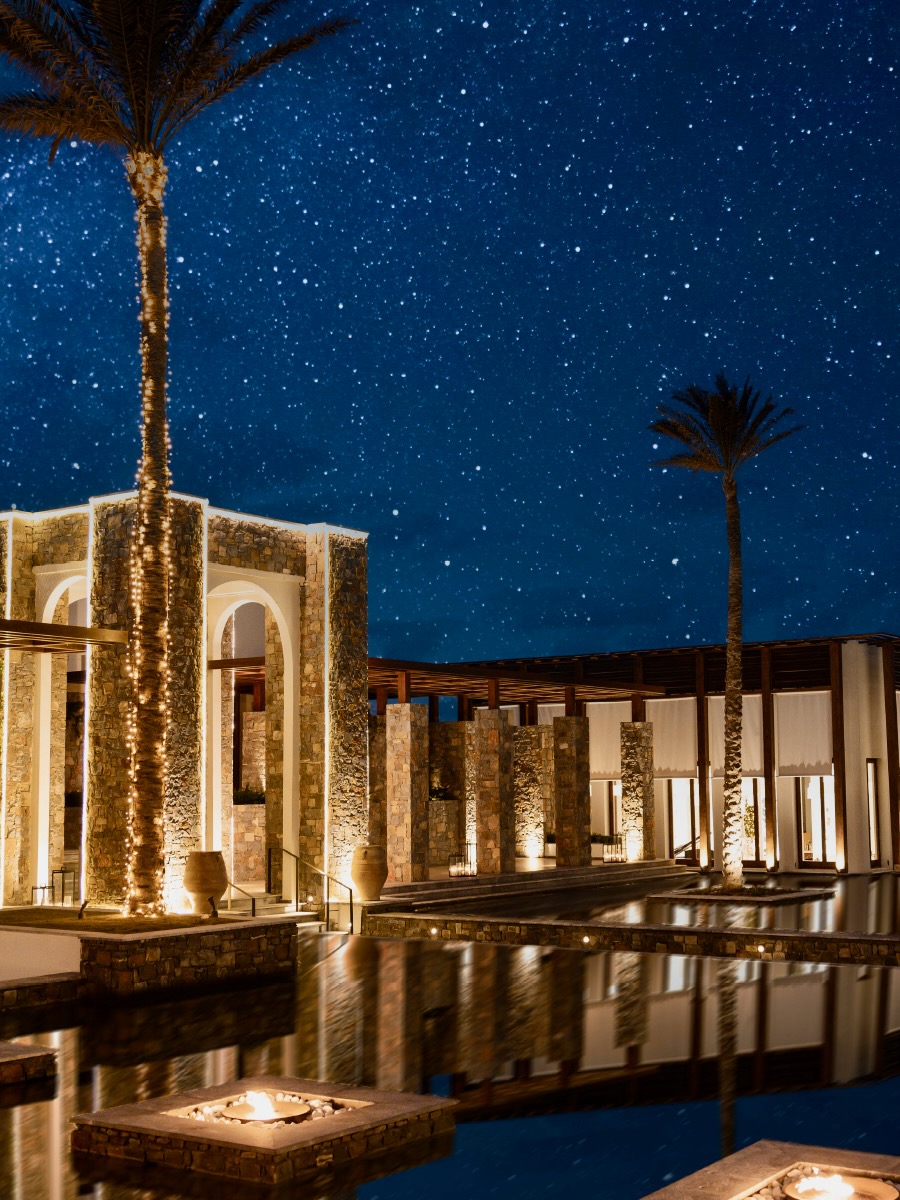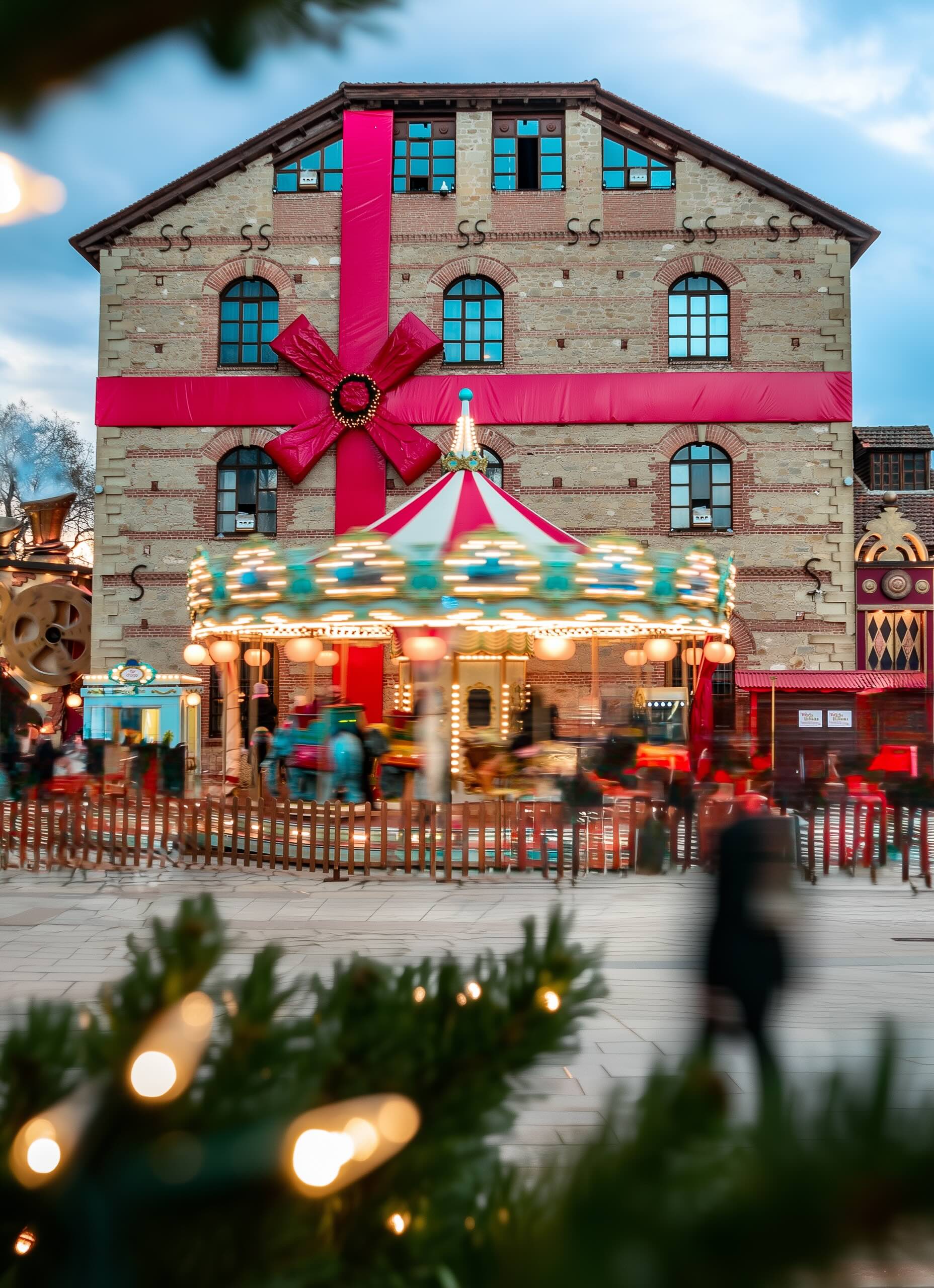Many visitors race out to Knossos on a whistle-stop tour before speeding off to their ultimate destinations. Those in the know, though, make an early start at the Archaeological Museum to beat the crowds, then spend a couple of hours walking the city, stepping into churches, and sitting at a streetside café with a coffee and a bougatsa, a cheese or custard filled pie, soaking in the atmosphere as people go about their daily business. Knossos will take up most of the afternoon, maybe treat yourself to a wine tasting nearby after your visit, or head back to town for an evening stroll around Ta Liontaria and Kornarou Square where half the population seems to congregate.
Ta Liontaria
A local landmark, the Lions, is at the heart of Eleftheriou Venizelos Square, named after the Cretan statesman who united the island with Greece in 1913. Built by Venetian governor Francesco Morosini, the stately Renaissance fountain incorporated four marble lions which were three hundred years old even then. Today, the square is crowded most of the day with shoppers and patrons of the local café terraces.
Agia Aikaterina
Built in 1555, Agia Aikaterina sits in the shadow of Agios Minos cathedral and it is one of Crete’s loveliest small churches. The church has a small museum of icons by Cretan artists, who often travelled to Italy to study under Renaissance masters. There are six icons by Michael Damaskinos who returned from Venice and married Byzantine and western elements in what became the Cretan school of hagiography. The island’s most famous artist, El Greco, studied in the monastery school attached to the church.
Agios Titos
The original church of Agios Titos was built in 961 AD by the Byzantine emperor Nikephorus Phokas, rebuilt as a mosque after an earthquake in 1856, and finally re-dedicated as a church in 1920 when the minaret was removed. One of the most important places of worship on the island, a chapel to the left of the entrance contains St. Titus’ skull set in a silver and gold reliquary. Titus is credited with converting the islanders to Christianity in the 1st century AD on the instructions of St. Paul.
Agios Minas
Completed in 1895, Agios Minas is the largest cathedral in Crete and one of the largest in Greece. Holding 8,000 worshippers it is busiest on November 11th, a local holiday, when Heraklion celebrates the feast of Minas, a fourth century Roman soldier who converted to Christianity.
Legend has it that the ghost of Minas on horseback appeared on Easter Sunday 1826 and dispersed an army of Turks ready to attack the celebrating Orthodox faithful.
Heraklion Archaeological Museum
One of the best museums in the whole of Greece, it tells the story of Crete, bringing to life more than 5,500 years of history, from Neolithic times to the Minoans and beyond. Set over two floors and 27 galleries, it is impossible to fully understand Crete without visiting here. The highlight of the collection are the Minoan treasures unearthed in the excavations of Knossos that showcase this snake-holding, bull-jumping, Linear B writing society. The ground floor galleries highlight the consolidation of power and the establishment of great palaces with artefacts from Phaistos, Malia and Zakros among them. Up on the second floor the bull leapers fresco stuns with its depiction of slim waisted youths vaulting over charging bulls.
Elsewhere the Phaistos disc continues to baffle paleographists and its 7th century BC script is yet to be deciphered. A famous rhyton, a vessel for pouring libations, is carved from black serpentine in the shape of a bull’s head with eyes made of red jasper and horns of gilded wood. An ivory acrobat and two bare-breasted goddesses holding wriggling snakes were among a group of finds hidden beneath the floor of a storeroom at Knossos. The most stunning rhyton of all is from Zakros and made of rock crystal. Earlier still, from around 1900 BC, the Minoans excelled at making pottery such as the paper thin Kamares ware decorated with vibrant colours and intricate designs.
Try to arrive early in the morning to avoid the tour buses or late in the afternoon when they have gone. Heraklion Archaeological Museum (Tel.:28102 79000, www.heraklionmuseum.gr, 12€ or 20€ combined with Knossos entry)
Historical Museum of Crete
Housed in an impressive neoclassical mansion, the museum has a diverse collection that narrates the seventeen centuries of local history and culture, ranging from early Christian times to the modern day. Byzantine artworks, objects from the periods of Ottoman and Venetian rule, artefacts from the wars of resistance and independence, and the Battle of Crete in WW2 are highlighted with a wealth of visual material and multimedia displays. Upon entering look out for the Lion of St. Mark sculpture with a Latin inscription that reads ‘I protect the kingdom of Crete’. Upstairs is a reconstruction of the study of local writer Nikos Kazantzakis, author of Zorba the Greek. The finest exhibits are two works by the artist El Greco, the only paintings by the island native to remain in Crete. Historical Museum of Crete (28102 83219, www.historical-museum.gr, 5€)
Koules
The inner harbour of Heraklion where small fishing boats land their catch is dominated by the massive fortress of Koules. Named by the Turks but actually built by the Venetians as the Castello de Moro in the 16th century. Old ships were filled with stone and sunk to form a breakwater on which the fortress was built. Decorated with the three stone lions of St. Mark, the symbol of Venice, the east side of the castle has a vaulted arsenal where ships were repaired and goods were stored for the three week journey to Italy. Nowadays, it serves as the backdrop for art exhibitions and cultural events.
Loggia
A gathering place for the Venetian nobility, the Loggia was built in 1620. The open-air arcade with a meeting hall above served as the administrative centre of the city during Ottoman times but it fell into disrepair. Restored to its original Palladian splendour along with the adjoining Venetian Armoury, they now serve as the City Hall.
Martinengo Bastion
Six arrowhead shaped fortifications pierce the Venetian walls; Martinengo is the largest, designed in the 16th century by Michele Sanmichel Venetian superstar architect to repel pirates and invaders. Today, literary pilgrims come to visit the burial place of Heraklion writer Nikos Kazantzakis, author of Zorba the Greek and The Last Temptation of Christ. A plain stone slab marks his grave with a poignant quote from his writings ‘I fear nothing, I hope for nothing, I am free.
Natural History Museum of Crete
A former electricity plant is home to a fun and informative guide to the wildlife of Greece and the wider Mediterranean. Four floors range from pre-history with animated dinosaurs to the modern day with live reptiles and small mammals in vitrines. The basement has a seismic table that recreates earthquakes from the past. Natural History Museum of Crete (Tel.:28102 82740, www.nhmc.uoc.gr, 7.5€)
Plateia Eleftherias
The biggest square in the city, palms and eucalyptus trees shade the marble pavement and benches. The archaeological museum is of the north end of the square, while to the west the main street Daidalou follows the line of an early fortification wall. In summer, strolling locals fill the square and surrounding streets.
Read also:
A Whistle Stop visit to Heraklion, the Capital of Crete
Traditional village in the heart of Crete with an extensive history




